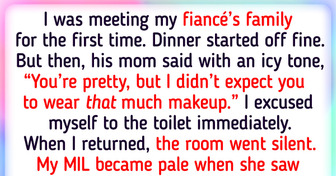10 Job Interview Stories That Took an Unexpected Turn


Family dynamics can be incredibly complex, especially when difficult decisions arise that force loved ones into opposing corners. Balancing the needs of children and partners often involves navigating emotional minefields where even the best intentions can lead to unintended consequences. Recently, Bright Side received a heartfelt letter from a reader grappling with such a dilemma, sharing the difficult choice she made in an effort to protect her daughter.
Blended families require compromise, patience, and a deep understanding of everyone’s emotional needs. But what happens when those needs collide in painful and unexpected ways?
Here’s what our reader write us:
“My 12 y.o. daughter has trauma-level fear of dogs. My 17 y.o. stepson knew—and brought home a puppy anyway.
She locked herself in her room for two days and I sent him to his aunt’s. No chances.
Next morning, she handed me a ripped sketch with his name into it.
He was drawn as a monster.
I thought I overreacted.
Now I’m not so sure.”
Thank you for sharing such a raw and complex moment. This is more than a conflict over a pet—it’s a test of boundaries, trust, and emotional safety. Here are 4 pieces of advice that may help your family heal and grow from this difficult chapter.
Validating a child’s feelings involves acknowledging their emotions without judgment, which helps them feel seen and understood. This approach is crucial in blended families to ensure all members feel respected and heard.
Engaging a family therapist can assist blended families in navigating complex dynamics, improving communication, and building trust among family members.
Establishing clear boundaries in a blended family is essential for creating a structured environment where all members understand expectations, leading to respect and harmony.
Rebuilding trust after a conflict requires patience, open communication, and a willingness to understand each other’s perspectives. It’s important to allow time for healing and not to force immediate resolution.
Rebuilding trust in a blended family isn’t easy, but with patience, empathy, and consistent effort, healing is possible. Sometimes, choosing what’s right for one child may feel like a betrayal to another—but love means protecting them all, even when the path forward is complicated.











